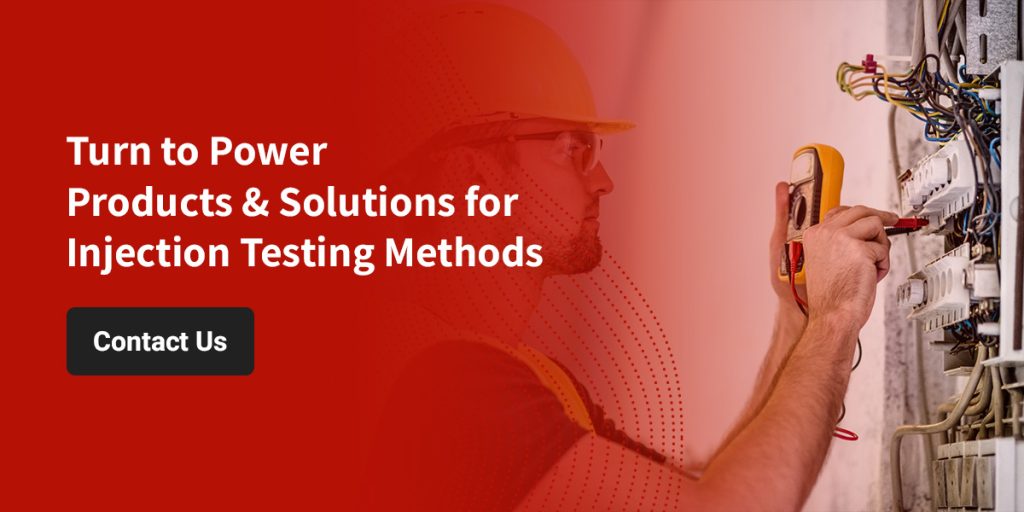Primary versus secondary injection testing is a common topic for any operation that relies on circuit breakers to regulate their power. The two types of injection testing are valuable. Each has its benefits and drawbacks. When specialists apply these testing methods strategically, they can determine when a unit needs repair and reinstallation.
Schedule Injection Testing Service
What Is Primary Injection Testing?
Primary injection testing is used for solid-state units and electromechanical trip units. The test will assess all sensors, wiring and the current conduction path of the circuit breaker. This type of testing is comprehensive, and it may be required for some units.
These tests must be conducted by a specialist because they involve the required current for the device injected into the system. Primary injection testing is most commonly required for circuit breakers that contribute to critical processes or engineered safety systems since reliability is a must. This type of testing is also used in the commissioning process alongside secondary injection testing.
One of the drawbacks of this type of injection testing is that it might not detect sensor wiring and polarity issues. To detect these problems, all three of the phases of the breaker must be tested at once.
What Is Secondary Injection Testing?
The only time to use secondary injection testing is during maintenance programs for solid-state trip units. This type of testing does not work for electromechanical trip units. This testing process is conducted when the circuit breaker is closed and not carrying currents through its main poles. A small test set plugs into the trip unit and simulates the three-phase currents that typically run through the trip unit.
Since secondary injection testing simulates the three-phase currents, it can detect sensor wiring and polarity issues where primary injection testing cannot. This is one of the major benefits of this type of testing.
In secondary injection testing, only the unit’s logic and wiring are tested. All other current-carrying components go untested. Since this test is not as comprehensive as primary injection testing, it’s suitable for general maintenance needs. However, it will offer the complete testing required for more critical systems. Secondary testing works well in conjunction with primary injection testing to gauge circuit breaker performance throughout the year.
Schedule Injection Testing Service
Turn to Power Products & Solutions for Injection Testing Methods
Injection testing methods for circuit breakers are critical for determining if a unit needs repair and reinstallation. Both methods are useful, and many systems can use a combination of the two. At Power Products & Solutions, we can implement the testing methods that are most appropriate for your units. Contact us today.


